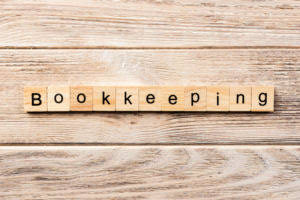
Let’s say a company has five salaried employees, each earning $2,500 per month. In our example, assume that they do not get paid for this work until the first of the next month. Accounts Receivable increases (debit) for $1,500 because the customer has not yet paid for services completed.
- An accrued revenue is the revenue that has been earned (goods or services have been delivered), while the cash has neither been received nor recorded.
- Accounts Receivable increases (debit) for $1,500 because the customer has not yet paid for services completed.
- With NetSuite, you go live in a predictable timeframe — smart, stepped implementations begin with sales and span the entire customer lifecycle, so there’s continuity from sales to services to support.
- Net income and the owner’s equity will be overstated, while expenses and liabilities understated.
- This is particularly important when accruing payroll expenses as well as any expenses you have incurred during the month that you have not yet been invoiced for.
Whereas you’d record a depreciation entry for a tangible asset, amortization is used to stretch the expense of intangible assets over a period of time. Or perhaps a customer has made a deposit for services you have not yet rendered. That’s why most companies use cloud accounting software to streamline their adjusting entries and other financial transactions. Manually creating adjusting entries every accounting period can get tedious and time-consuming very fast. At the same time, managing accounting data by hand on spreadsheets is an old way of doing business, and prone to a ton of accounting errors. By definition, depreciation is the allocation of the cost of a depreciable asset over the course of its useful life.
Step 2: Recording accrued expenses
If so, this amount will be recorded as revenue in the current period. Any time you purchase a big ticket item, you should also be recording accumulated depreciation and your monthly depreciation expense. Most small business owners choose straight-line depreciation to depreciate fixed assets since it’s the easiest method to track. For instance, if you decide to prepay your rent in January for the entire year, you will need to record the expense each month for the next 12 months in order to account for the rental payment properly. If adjusting entries are not made, those statements, such as your balance sheet, profit and loss statement, (income statement) and cash flow statement will not be accurate.

If a business has debt finance, one of the adjusting journal entries will be for interest accrued but not paid at the and of an accounting period. In practice, you are more likely to encounter deferrals than accruals in your small business. The most common deferrals are prepaid expenses and unearned revenues.
Types of Adjusting Entries
That journal entry is reversed on the first day of the next reporting period. Non-cash expenses – Adjusting journal entries are also used to record paper expenses like depreciation, amortization, and depletion. These expenses are often recorded at the end of period because they are usually calculated on a period basis. This also relates to the matching principle where the assets are used during the year and written off after they are used. Accrued expenses and accrued revenues – Many times companies will incur expenses but won’t have to pay for them until the next month. Since the expense was incurred in December, it must be recorded in December regardless of whether it was paid or not.

Reversing entries are
normally posted at the beginning of the period following the period in which
adjusting entries were posted. Reversing entries can be created manually or
automatically by accounting software. The wage expense for the month has been included in the wage expense account and the liability for unpaid wages is reflected in the balance sheet wages payable account.
Deferrals
Once all adjusting journal entries have been posted to T-accounts, we can check to make sure the accounting equation remains balanced. Following is a summary showing https://www.bookstime.com/articles/lifo-reserve the T-accounts for Printing Plus including adjusting entries. When expenses are prepaid, a debit asset account is created together with the cash payment.
- When you entered the check into your accounting software, you debited Insurance Expense and credited your checking account.
- The company may also enter into a lease agreement that requires several months, or years, of rent in advance.
- Recall from Analyzing and Recording Transactions that prepaid expenses (prepayments) are assets for which advanced payment has occurred, before the company can benefit from use.
- However, today it could sell for more than, less than, or the same as its book value.
- Accrued expenses are expenses made but that the business hasn’t paid for yet, such as salaries or interest expense.
You have paid for this service, but you haven’t used the coverage yet. At year-end, half of December’s wages have not yet been paid; they will be paid on the 1st of January. If you keep your books on a true accrual basis, you would need to make an adjusting entry for these wages dated Dec. 31 and then reverse it on Jan. 1.
With NetSuite, you go live in a predictable timeframe — smart, stepped implementations begin with sales and span the entire customer lifecycle, so there’s continuity from sales to services to support. You will learn more about depreciation and its computation in Long-Term Assets. However, one important fact that we need to address now is that the book value of an asset is not necessarily the price at which the asset would sell. For example, you might have a building for which you paid $1,000,000 that currently has been depreciated to a book value of $800,000.
Plasma metabolomics profiles in Black and White participants of the … – BMC Medicine
Plasma metabolomics profiles in Black and White participants of the ….
Posted: Tue, 31 Oct 2023 01:37:36 GMT [source]
Behind the scenes, though, your software is debiting the expense account (or category) you use on the check and crediting your checking account. If you use small-business accounting software — like QuickBooks, Xero or FreshBooks — you might not be familiar with journal entries. adjusting entries examples That’s because most accounting software posts the journal entries for you based on the transactions entered. Unless a company’s financial statements are adjusted at the end of each accounting period, they will not present the true profit, assets, liabilities, etc.
The interest expense for the month has been included in the interest expense account and the liability for unpaid interest is reflected in the balance sheet interest payable account. Under the cash method of accounting, a business records an expense when it pays a bill and revenue when it receives cash. The problem is, the inflow and outflow of cash doesn’t always line up with the actual revenue and expense. Say, for example, a client prepays you for six months’ worth of work.
Passing our certificate exam will allow you to gain confidence and distinguish yourself. You will become more valuable as you prepare to pass this 40-question exam. The salary the employee earned during the month might not be paid until the following month. For example, the employee is paid for the prior month’s work on the first of the next month.
Payroll is the most common expense that will need an adjusting entry at the end of the month, particularly if you pay your employees bi-weekly. In order to account for that expense in the month in which it was incurred, you will need to accrue it, and later reverse the journal entry when you receive the invoice from the technician. As important as it is to recognize revenue properly, it’s equally important to account for all of the expenses that you have incurred during the month. This is particularly important when accruing payroll expenses as well as any expenses you have incurred during the month that you have not yet been invoiced for. For example, a company that has a fiscal year ending December 31 takes out a loan from the bank on December 1. The terms of the loan indicate that interest payments are to be made every three months.
